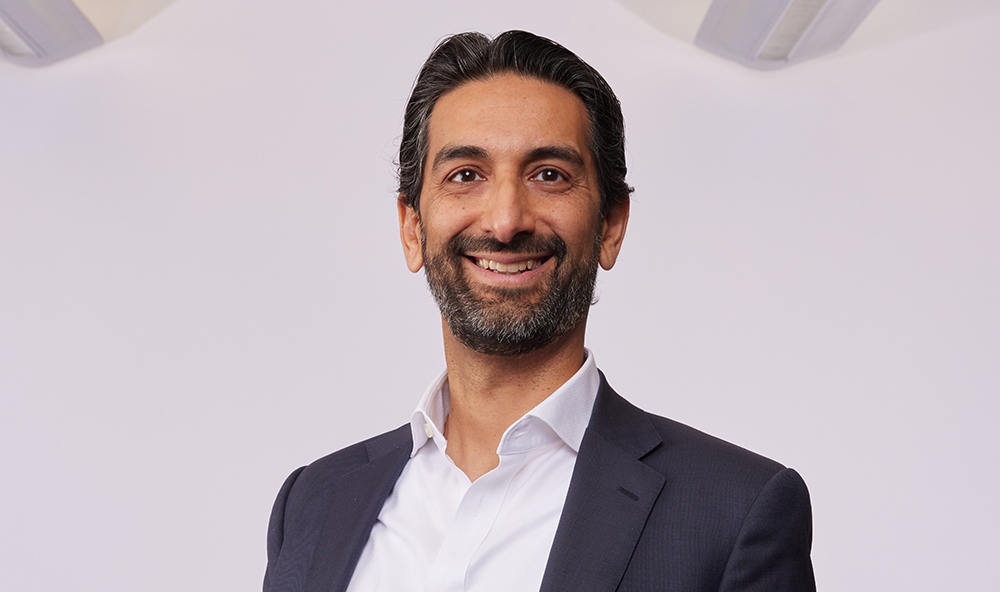 图片来源:MARKO GEBER—GETTY IMAGES
图片来源:MARKO GEBER—GETTY IMAGES麦肯锡公司(McKinsey & Company)的纽约办事处的高级合伙人伊沙安·赛斯对我说:“我在过去几个月举行了80多次会面,基本上与我聊过的所有首席财务官和首席执行官都提到:‘我们度过了很多危机,但这一次是史无前例的。’我们一直疲于救火,一场接一场。”
我和赛斯聊了聊麦肯锡的新报告,这份报告源自一项研究,它介绍了在审慎管控不利因素的同时大力把握有利因素的价值。赛斯指出,随着这一宏观经济环境的继续,首席财务官需要对其传统的策略思维进行调整,以引导其公司度过市场波动期。
这一点与Adobe的首席财务官兼财务、技术服务与运营执行副总裁丹·德恩的观点不谋而合,后者最近对《财富》杂志说:“我认为这里出现了一些结构性的变化,金融机构调整了首席财务官的职责,让其来应付复杂的环境,接触基本的根源性问题,塑造公司内部的讨论和对话,改善业务决策流程,然后帮助推动执行,交付实实在在的影响力和业绩。”
在以下问答环节中,赛斯畅谈了来自于报告《在动荡时期的战略勇气》(Strategic courage in an age of volatility)的洞见。他还解释了首席财务官如何采取大胆举措来加强合作、现代KPI和指标,以及未来首席财务官应该具备的技能。

最佳实践与大胆举措
你的合作对象包括金融服务和私募股权客户,例如投行、零售银行、经纪商和保险公司。在你们聊到当前环境时,首席财务官们是否提到过同样的话题?最佳实践都有哪些?
说到这个问题,我听到每一位首席财务官客户都会提及:当今市场的波动幅度以及不确定性真的是前所未见。有意思的是,这些震惊事件接踵而至,相互叠加,比如新冠疫情、数字、可持续性和气候变化。然后,通胀、劳动力市场问题、供应链错位以及俄乌冲突又来了。
最优秀的首席财务官实际上会将当前的环境看作是一个机会。在他们看来,这是一个采取大胆举措的机会。我想引用已故巴西赛车冠军埃尔顿·塞纳的一句话:“在晴天,你无法超过15辆赛车,但是雨天就可以。”我想说的是,如果你放眼全球,现在正好是下雨天。我们看到,最优秀的首席财务官会秉承这样的一种思维:异常积极、大胆地把握有利因素,同时要坚定、持续地管控不利因素。
这是一种双管齐下的领导方式,而且不能顾此失彼。要管控好不利因素,应对成本,考虑通胀场景,然后认真审视支出,但这还不够。我们对2008年至2009年金融危机公司韧性的调查清晰地显示,那些先于其同行走出危机的公司会同时关注有利因素和不利因素。
你提到了采取大胆举措,都涉及什么内容,能举个例子吗?
尤其在这种环境下,我们想到了在洞见、投入和执行优势这三个方面来打造优势的领导者和首席财务官。它类似于金融期权,期权的价值会在市场波动时上升。如今就是这样。因此,只要让洞见或投入比同行精准10%,而且领先同行10%,实际上就会获得巨大的优势。
说到洞见方面的魄力,我们看到最优秀的首席财务官会尽其所能,从更多元化的非标准资源那里获得更好的信息。在这一环境下,依靠传统数据、分析和常见的行事方式难以奏效。接下来我会举例说明。一家银行将其全球各个市场约75名负责人汇聚到了一起。
然后让他们在一个会议室待了两天,并说:“我们这里的人对中国、巴西、印度、德国十分了解,而且他们也会与客户、监管方和供应商进行交流,能够获取不同来源的信息,从通胀到工资再到付款流程。然而,我们并没有利用这一点。我们如何才能吸收这些绝佳的信息并加以利用,而且让整个公司更快地获取这种智慧。”
人们都在大谈特谈科技以及更好的数据驱动型洞见,这是其中的一个核心要素。然而,推动洞见的人力要素包括与一线员工和销售人员会面沟通。如果是一家银行,你就应该与分行的人交谈。如果是零售业务,则应该与收银员和销售人员交谈。应该与那些每天和客户打交道的人进行交流。历史上,首席财务官可能依靠一群高层经理来传达这种观点。我们认为,要保持与时俱进,向一线下沉甚至更为重要。
“衡量与监控增长的标准”
对于首席财务官来说,高管和不同部门之间是否需要加大合作力度?
我认为,这类跨部门和机构之间的合作实际上对于我们上面所说的投入优势来说是一个关键要素。人们必须对资源配置进行重大调整,比如人力、预算和资金,而且要尽早、快速地布局这类调整。要实现这一点,就得进行技术与财务、营销和财务以及人力与财务之间的合作。公司内部排名前十的增长支柱都有哪些?公司是否留有那些最优秀的员工,用于应付未来几个月的业务?
第二个要素依然十分关键,就是确立衡量和监控增长的标准。我定期沟通的多位首席执行官通常都会说:“我的首席财务官非常善于沟通支出事宜。他们知道如何管理支出、人员数量和技术开支。我们在效率和费用管理方面确立了优秀的策略。我希望我们也能够确立同样的策略,去衡量和监控带来/拖累增长指标、客户终身价值、增长所需技术开支的回报以及创新。我们没有钱来从事这些事情。是否有什么方法可以让首席财务官真正地改善这一方面的表现呢?”
这一要素对于打造优势来说真的很重要,其中包括确立衡量标准、跨领域合作,以及对资源进行重大调整。
因此,有鉴于你所提到的所有这些同时存在的要素,包括地缘政治、通胀、人才留存和人才流失以及指标现代化,最要紧的是先实现哪一个?
首席财务官一直忙于灭火,一场接一场。不过,我上周碰到的一位首席财务官说:“我们的竞争对手失去了人力资源部门的招聘团队,我们的招聘人员被挖走了。”人才市场已经疯狂到了这种地步。紧急事件通常都会取代重要事情,但在眼下这个时候,我们不能让这种事情发生。你必须去灭火。同时,你还得为管理团队进行战略思考创造时间。我认为首席财务官在这一方面确实有其独特的能力。我们得开展有事实依据的并购,我们得了解接下来公司可以追求的目标是什么,这样,即便估值下滑,即便已经出现了大幅下滑,我们也能够快速采取行动。我们得知道公司最喜欢哪个市场,这样我们便可以继续努力获取新客户,继而更快地采取行动。
价值创造故事
首席财务官一职会继续朝着什么方向变化?
我认为首席财务官一职在过去10年中发生了巨大变化。这个职务在过去更多的是从事会计工作以及专注于合规交易,但如今在大多数机构并非如此。如果要我选择一个我认为首席财务官需要继续努力的领域,那就是要讲好公司的价值,创造故事。
这其实就是在说,作为高管团队的一员,再加上首席执行官和董事会,应该了解什么才可以让公司的价值、股价、市值在三年至四年内翻番?然后,非常重要的一点在于,要能够向投资者讲述这个故事,懂得如何叙述,从而让人们真正地了解公司的旅程。这一整套内容便是我们所称的价值创造论题。我认为,这就是众多首席财务官未来所需掌控的前沿。
即将上任的首席财务官们在未来都需要掌握哪些关键技能?
这些可能并不是你通常所听到的那些内容,但其中一个关键的技能便是了解最优秀的公司在技术驱动型产品开发方面都做了哪些工作。如何搭建这些内容?如何让一群有创意的人士,不论是面对医药研发、数字产品开发或银行业务,都能够拿出新的理念,然后在同一个屋檐下与工程师和其他专业人士进行交流,继而在更短的时间跨度内将产品推向市场?在所有行业,每一位首席财务官或多或少都会遇到类似的挑战。
这回到了我之前提到过的一点:跨领域合作。只有让工程、产品营销和接触客户的员工紧密合作,才可以更快地将产品推向市场。我认为实现这一目标的前提在于,首席财务官必须更多地接触一线,然后决定怎么才能够顺利地促成编程、工程和产品开发进行合作?
另一个技能便是根植于价值创造论题的故事讲述。我看到,优秀的首席财务官在这一方面做的尤为出色。每个人最终都会了解到同样的事实,因为数据在那,财务报表也在那,投资者和分析师手里都有。然而,作为一家公司,有哪三个或四个重大目标是我们对外公开,并在为之努力?我们在确立财务里程碑之外应该如何确立支撑点和运营里程碑?因此,新的客户和市场在这一过程中会让人们确信这一点。
我认为首席财务官和市场通常都非常善于沟通财务指标和KPI。然而,我觉得首席财务官可以在传递运营指标和KPI上下更多的功夫,因为在大多数时候,财务业绩往往滞后于运营指标。公司的实际损益可能要到两三年后才能够体现出来。然而,如何去表达公司在进步方面采取的过渡举措是一个技术活。(财富中文网)
译者:冯丰
审校:夏林
麦肯锡公司(McKinsey & Company)的纽约办事处的高级合伙人伊沙安·赛斯对我说:“我在过去几个月举行了80多次会面,基本上与我聊过的所有首席财务官和首席执行官都提到:‘我们度过了很多危机,但这一次是史无前例的。’我们一直疲于救火,一场接一场。”
我和赛斯聊了聊麦肯锡的新报告,这份报告源自一项研究,它介绍了在审慎管控不利因素的同时大力把握有利因素的价值。赛斯指出,随着这一宏观经济环境的继续,首席财务官需要对其传统的策略思维进行调整,以引导其公司度过市场波动期。
这一点与Adobe的首席财务官兼财务、技术服务与运营执行副总裁丹·德恩的观点不谋而合,后者最近对《财富》杂志说:“我认为这里出现了一些结构性的变化,金融机构调整了首席财务官的职责,让其来应付复杂的环境,接触基本的根源性问题,塑造公司内部的讨论和对话,改善业务决策流程,然后帮助推动执行,交付实实在在的影响力和业绩。”
在以下问答环节中,赛斯畅谈了来自于报告《在动荡时期的战略勇气》(Strategic courage in an age of volatility)的洞见。他还解释了首席财务官如何采取大胆举措来加强合作、现代KPI和指标,以及未来首席财务官应该具备的技能。
最佳实践与大胆举措
你的合作对象包括金融服务和私募股权客户,例如投行、零售银行、经纪商和保险公司。在你们聊到当前环境时,首席财务官们是否提到过同样的话题?最佳实践都有哪些?
说到这个问题,我听到每一位首席财务官客户都会提及:当今市场的波动幅度以及不确定性真的是前所未见。有意思的是,这些震惊事件接踵而至,相互叠加,比如新冠疫情、数字、可持续性和气候变化。然后,通胀、劳动力市场问题、供应链错位以及俄乌冲突又来了。
最优秀的首席财务官实际上会将当前的环境看作是一个机会。在他们看来,这是一个采取大胆举措的机会。我想引用已故巴西赛车冠军埃尔顿·塞纳的一句话:“在晴天,你无法超过15辆赛车,但是雨天就可以。”我想说的是,如果你放眼全球,现在正好是下雨天。我们看到,最优秀的首席财务官会秉承这样的一种思维:异常积极、大胆地把握有利因素,同时要坚定、持续地管控不利因素。
这是一种双管齐下的领导方式,而且不能顾此失彼。要管控好不利因素,应对成本,考虑通胀场景,然后认真审视支出,但这还不够。我们对2008年至2009年金融危机公司韧性的调查清晰地显示,那些先于其同行走出危机的公司会同时关注有利因素和不利因素。
你提到了采取大胆举措,都涉及什么内容,能举个例子吗?
尤其在这种环境下,我们想到了在洞见、投入和执行优势这三个方面来打造优势的领导者和首席财务官。它类似于金融期权,期权的价值会在市场波动时上升。如今就是这样。因此,只要让洞见或投入比同行精准10%,而且领先同行10%,实际上就会获得巨大的优势。
说到洞见方面的魄力,我们看到最优秀的首席财务官会尽其所能,从更多元化的非标准资源那里获得更好的信息。在这一环境下,依靠传统数据、分析和常见的行事方式难以奏效。接下来我会举例说明。一家银行将其全球各个市场约75名负责人汇聚到了一起。
然后让他们在一个会议室待了两天,并说:“我们这里的人对中国、巴西、印度、德国十分了解,而且他们也会与客户、监管方和供应商进行交流,能够获取不同来源的信息,从通胀到工资再到付款流程。然而,我们并没有利用这一点。我们如何才能吸收这些绝佳的信息并加以利用,而且让整个公司更快地获取这种智慧。”
人们都在大谈特谈科技以及更好的数据驱动型洞见,这是其中的一个核心要素。然而,推动洞见的人力要素包括与一线员工和销售人员会面沟通。如果是一家银行,你就应该与分行的人交谈。如果是零售业务,则应该与收银员和销售人员交谈。应该与那些每天和客户打交道的人进行交流。历史上,首席财务官可能依靠一群高层经理来传达这种观点。我们认为,要保持与时俱进,向一线下沉甚至更为重要。
“衡量与监控增长的标准”
对于首席财务官来说,高管和不同部门之间是否需要加大合作力度?
我认为,这类跨部门和机构之间的合作实际上对于我们上面所说的投入优势来说是一个关键要素。人们必须对资源配置进行重大调整,比如人力、预算和资金,而且要尽早、快速地布局这类调整。要实现这一点,就得进行技术与财务、营销和财务以及人力与财务之间的合作。公司内部排名前十的增长支柱都有哪些?公司是否留有那些最优秀的员工,用于应付未来几个月的业务?
第二个要素依然十分关键,就是确立衡量和监控增长的标准。我定期沟通的多位首席执行官通常都会说:“我的首席财务官非常善于沟通支出事宜。他们知道如何管理支出、人员数量和技术开支。我们在效率和费用管理方面确立了优秀的策略。我希望我们也能够确立同样的策略,去衡量和监控带来/拖累增长指标、客户终身价值、增长所需技术开支的回报以及创新。我们没有钱来从事这些事情。是否有什么方法可以让首席财务官真正地改善这一方面的表现呢?”
这一要素对于打造优势来说真的很重要,其中包括确立衡量标准、跨领域合作,以及对资源进行重大调整。
因此,有鉴于你所提到的所有这些同时存在的要素,包括地缘政治、通胀、人才留存和人才流失以及指标现代化,最要紧的是先实现哪一个?
首席财务官一直忙于灭火,一场接一场。不过,我上周碰到的一位首席财务官说:“我们的竞争对手失去了人力资源部门的招聘团队,我们的招聘人员被挖走了。”人才市场已经疯狂到了这种地步。紧急事件通常都会取代重要事情,但在眼下这个时候,我们不能让这种事情发生。你必须去灭火。同时,你还得为管理团队进行战略思考创造时间。我认为首席财务官在这一方面确实有其独特的能力。我们得开展有事实依据的并购,我们得了解接下来公司可以追求的目标是什么,这样,即便估值下滑,即便已经出现了大幅下滑,我们也能够快速采取行动。我们得知道公司最喜欢哪个市场,这样我们便可以继续努力获取新客户,继而更快地采取行动。
价值创造故事
首席财务官一职会继续朝着什么方向变化?
我认为首席财务官一职在过去10年中发生了巨大变化。这个职务在过去更多的是从事会计工作以及专注于合规交易,但如今在大多数机构并非如此。如果要我选择一个我认为首席财务官需要继续努力的领域,那就是要讲好公司的价值,创造故事。
这其实就是在说,作为高管团队的一员,再加上首席执行官和董事会,应该了解什么才可以让公司的价值、股价、市值在三年至四年内翻番?然后,非常重要的一点在于,要能够向投资者讲述这个故事,懂得如何叙述,从而让人们真正地了解公司的旅程。这一整套内容便是我们所称的价值创造论题。我认为,这就是众多首席财务官未来所需掌控的前沿。
即将上任的首席财务官们在未来都需要掌握哪些关键技能?
这些可能并不是你通常所听到的那些内容,但其中一个关键的技能便是了解最优秀的公司在技术驱动型产品开发方面都做了哪些工作。如何搭建这些内容?如何让一群有创意的人士,不论是面对医药研发、数字产品开发或银行业务,都能够拿出新的理念,然后在同一个屋檐下与工程师和其他专业人士进行交流,继而在更短的时间跨度内将产品推向市场?在所有行业,每一位首席财务官或多或少都会遇到类似的挑战。
这回到了我之前提到过的一点:跨领域合作。只有让工程、产品营销和接触客户的员工紧密合作,才可以更快地将产品推向市场。我认为实现这一目标的前提在于,首席财务官必须更多地接触一线,然后决定怎么才能够顺利地促成编程、工程和产品开发进行合作?
另一个技能便是根植于价值创造论题的故事讲述。我看到,优秀的首席财务官在这一方面做的尤为出色。每个人最终都会了解到同样的事实,因为数据在那,财务报表也在那,投资者和分析师手里都有。然而,作为一家公司,有哪三个或四个重大目标是我们对外公开,并在为之努力?我们在确立财务里程碑之外应该如何确立支撑点和运营里程碑?因此,新的客户和市场在这一过程中会让人们确信这一点。
我认为首席财务官和市场通常都非常善于沟通财务指标和KPI。然而,我觉得首席财务官可以在传递运营指标和KPI上下更多的功夫,因为在大多数时候,财务业绩往往滞后于运营指标。公司的实际损益可能要到两三年后才能够体现出来。然而,如何去表达公司在进步方面采取的过渡举措是一个技术活。(财富中文网)
译者:冯丰
审校:夏林
“I’ve probably had 80 plus conversations in the last few months, and literally every CFO and CEO that I have spoken with have said, ‘We’ve lived through many crises, but this is just pretty unprecedented,’” Ishaan Seth, a senior partner at McKinsey & Company’s New York office, told me. “We’re running from putting out one fire to the next.’’
I sat down with Seth for a conversation about McKinsey’s new report based on research pointing to the value of being prudent about managing the downside while aggressively pursuing the upside. As this macroeconomic environment continues, CFOs require a mindset shift from traditional tactics to guide their companies through volatility, according to Seth.
That tracks with what Dan Durn, Adobe CFO and EVP of finance, technology services and operations, recently told Fortune. “I think there’s been a tectonic shift where finance organizations are pivoting the CFO role to sort through complexity, get to core underlying root cause issues, frame the debate and dialogue inside of the company, sharpen business decision making, and then help drive execution to deliver tangible impact and tangible results,” Durn said.
In the following Q&A, Seth shares insights from the report, “Strategic courage in an age of volatility.” He also explains how CFOs can take bold moves, enhance collaboration, modern KPIs and metrics—and what skill sets future CFOs will need.
Best practices and bold moves
You work with financial services and private equity clients, including investment banks, retail banks, brokerages, and insurance companies. Is there a common theme you hear from CFOs about the current environment? And what are some of the best practices?
If there was one thing to point to that I’m hearing every one of my CFO clients talk about: the degree of volatility and uncertainty in today’s market is really quite unprecedented. What is interesting is we’re seeing multiple shocks layered one on top of the other—the pandemic, digital, sustainability and climate transitions. And then you put on top of that inflation, the labor markets, supply chain dislocations, and the Ukraine and Russia conflict.
The best CFOs are actually seeing this current environment as an opportunity. They’re seeing this as an opportunity to be bo·ld. I’ll use the analogy of the late Brazilian car-racing champion Ayrton Senna: ‘You cannot overtake 15 cars in sunny weather, but you can when it’s raining.’ And let me tell you, it is raining today when you look at the world more broadly. That kind of mindset of being incredibly aggressive and bold on the upside while absolutely continuing to manage the downside is something we see the best CFOs doing.
That’s ambidextrous leadership—you’ve got to do both. You’ve got to manage the downside, work on costs, have your inflation scenarios, and take a hard look at expenses, but that’s not enough. Our research on resilience from the ‘08-’09 financial crisis strongly suggests companies that pulled out of the crisis ahead of their peers moved on both the upside and downside.
When you talk about bold moves, do you have any examples of what that would entail?
We think about, particularly in this environment, the idea of leadership and CFOs who are building an edge in three ways: an edge on insights, commitment, and execution. Just like with a financial option, the value of the option rises in times of volatility. The same is true right now. So getting that edge on insight or commitment 10% more accurate and 10% ahead of your peers is actually going to add a ton.
In boldness around this idea of insights, we are seeing the best CFOs pushing hard to get better information from a more diverse, non-standard set of sources than ever before. Relying on conventional data, conventional analysis, and the common ways of doing things is not going to hack it in this environment. I’ll give you an example. A bank brought together probably 75 or so chief country officers from all of their global markets.
They put them in a room for two days and said: ‘We’ve got people here who understand China, Brazil, India, Germany, and that are talking to clients, regulators, and suppliers and have different sources of signals on everything from inflation to wage rates to payment flows. But we’re not tapping into this. How can we take all this wonderful information and harness it in a way that we as a company can get this kind of wisdom much more quickly?’
Much has been written about technology and better data-driven insights, which is one central element. But the human element of driving insights includes going and talking to your frontline employees and your salesforce. If you’re a bank, talk to people in your branches. Talk to your cashiers and salespeople if you’re in the retail business. You need to communicate with people who are dealing with customers on a daily basis. Historically, as a CFO, you may have relied on a group of senior management managers to convey that sentiment. We think moving to the frontline is even more important to stay current.
“Vocabulary in measuring and monitoring growth”
Do CFOs need increased collaboration within the C-suite and different departments?
I think that type of teaming across functional silos and organizational silos is actually a critical element of what we call an edge in commitment. You have to make material shifts in your resource allocation—people, budget, dollars. And you need to move quickly and early on doing those things. To do that, you have to have to team between technology and finance, marketing and finance, and HR and finance. What are your 10 biggest growth cylinders across the company? And do we have our best people decked against those as we look out over the next few months?
A second element, which is also key, is having the vocabulary to measure and monitor this idea of growth. The CEOs I have been in discussions with routinely will say some version of the following: ‘My CFO has an amazing way of talking about expenses. They know how to manage expenses, headcount, and technology spend. We’ve got an amazing vocabulary on efficiency and expense management. I wish we had that same vocabulary in measuring and monitoring growth—leading versus lagging indicators, lifetime value of customers, return on technology spent for growth, and innovation. We have no artillery to go after that. Is there a way for CFOs to really step up their game on that?’
That’s a really important element in building this edge on commitment, which includes building up that vocabulary on measurement, working across silos, and also making material shifts in the resources.
So with all of these different elements going on simultaneously that you’ve described, including geopolitics, inflation, talent, retention and talent attrition, and modernizing metrics, what’s urgent to prioritize?
CFOs are running from putting out one fire to the next. I actually had a CFO last week who said, ‘We have our competitors picking off our recruiting teams in HR; our recruiters are being poached.’ That’s how crazy the talent market has gotten. The urgent will often take the place of the important, but now is not a time to let that happen. You’ve got to fight the fires. But you’ve got to be able to create time as a management team for strategic thinking. I think CFOs do have a unique ability to do that. Let’s have the fact-based M&A. Let’s know what the next several targets are that we may go after, so as valuations decline, as they’ve already done significantly, we can move quickly. Let’s know which markets we like the most so that as we continue to dial up new client acquisitions, we’re able to move more quickly.
The value-creation story
How is the role of the CFO continuing to evolve?
I think the role of the CFO has evolved exponentially over the last decade. What traditionally used to be more of an accounting and compliance transactions-oriented function is not the case in most organizations. If I had to pick one area where I think CFOs will need to continue to work on, it’s owning the value-creation story for the company.
This is basically saying, as a senior team, with the CEO and the board, what is going to double the value of this company, double the value of the stock, double our market cap, three to four years from now? And then, really importantly, being able to tell the investor story, the narrative, so people actually understand the journey that you’re on. That’s the integrated set of things that we call the value creation thesis. I think there’s the next frontier for many CFOs out there.
What crucial skill sets will up-and-coming CFOs need in the future?
These may not be the typical things you hear, but one crucial skill set is understanding what the best companies are doing around technology-driven product development. How does stuff get built? How do you take a group of creative people, whether it be R&D in pharmaceuticals, or digital product development and banking, come up with an idea, get in a room with a group of engineers and other professionals, and bring something to market in a shorter space of time? In every industry, every CFO has some version of that challenge.
Going back to the point raised earlier, it’s working across silos. It’s engineering, product marketing, and people close to the customer working together to get things to market more quickly. And I think that only happens when CFOs get a little bit more dirt under the fingernails to determine—how do good coding and engineering and product development get done?
And another skill set is storytelling rooted in a value creation thesis. That’s something I see the best CFOs do supremely well. Everybody has access at the end of the day to the same facts. You’ve got the data. You’ve got the financial reports. The investors and analysts have it. But what are the three or four big markers we publicly commit ourselves to reach as a company? And how do we create the proof points, the operational milestones, not just the financial milestones? So new customers and markets will give people conviction along the way.
I think CFOs and the markets are generally very good at communicating financial metrics and KPIs. But I think there’s an opportunity to do more on conveying operational metrics and KPIs because, most often, the financial performance will lag behind the operational metric. The actual P&L may show up two or three years down the road. But finding a way to communicate interim steps of progress is a skill.






